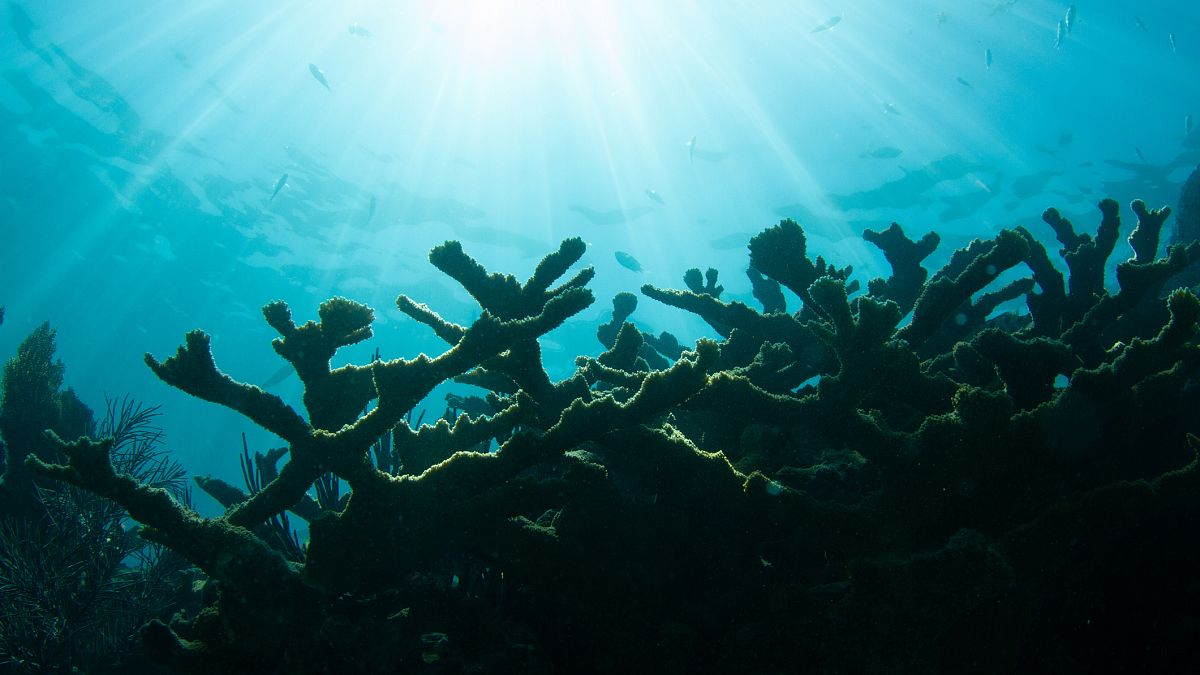Scientists are using laboratories to preserve shrinking coral reef populations in Florida.
At a laboratory in central Florida, biologist Aaron Gavin is feeding shrimp to more than 700 corals living in saltwater tanks.
The work of Gavin and his team could be the last chance to save the species that make up the only coral reef in the United States' continental waters.
Using artificial currents and local fish, the scientists have diligently recreated the coral reef habitat found in the waters off the southern tip of the state.
They hope to prevent the 18 species of coral in their care from suffering a mysterious ailment called SCTLD (stony coral tissue loss disease), which is afflicting wild coral up and down the Florida Reef Tract.
This stretch of reef runs for 360 miles from the Dry Tortugas, which are the westernmost islands in the Florida Keys, all the way to the town of St Lucie, located about 120 miles north of Miami.
"We are holding the corals safely and healthy in our care," explains Justin Zimmerman, the director of the Orlando-based lab.
"If they were still in the wild, up to 90 per cent of them would have been dead," Zimmerman adds.
A devastating ailment
SCTLD was first discovered in 2014 near Miami, and has continued to spread rapidly, killing about half of stony coral species to date.
The cause of the disease remains unknown, and it is now plaguing the animals further into the Caribbean, from Mexico all the way to Belize.
The lab's work is part of a project created in 2018 by the National Oceanic and Atmospheric Association and the Florida Fish and Wildlife Conservation Commission.
Faced with the extinction of more than 20 hard corals, the group devised a plan to extract healthy corals from the region's waters and care for them in artificially equipped aquariums. They hope to be able to return the corals to their wild habitats in the future.
"You are looking at the future of Florida Reef Tract in this room," Aston says of the corals in the Orlando aquariums. "And their grandchildren will be what goes back out to the water."
Return to the reef tract
The first part of the rescue plan has allowed wildlife authorities to save nearly 2,000 colonies of corals, which are now stored at more than 20 institutions in 14 different states.
The second part of the plan requires researchers to successfully return the corals to the ocean.
The scientists are studying the genetics of the rescued animals in an effort to cultivate new specimens that could be more resistant to disease, as well as other threats such as warming water temperatures.
The success or failure of these endeavours could have huge consequences for the region.
Stony corals, made up of limestone skeletons, create coral reefs, which in turn provide a home for a quarter of all marine life.
A hit to coral health could damage the Florida tourism industry, which generates over €7 billion a year through fishing and diving alone.
Key Largo resident Steve Campbell, 59, is worried about what comes next.
"I've been in the Florida Keys now for 20 years, and I'm out on the water every day," he says.
"Obviously we make our living out here. We take people out to the reef for the enjoyment of seeing the reef."
"For us it is extremely important."
Watch the video above to find out more.



